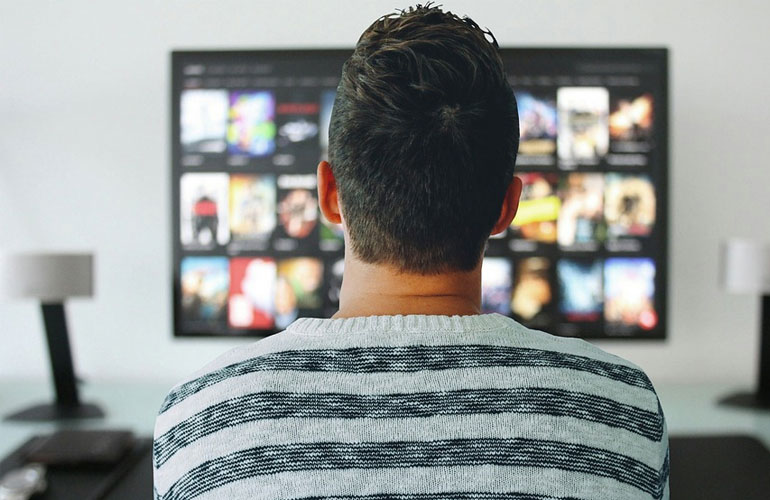The business world has been transformed by technological breakthroughs. Every industry area has adopted new technologies, and the entertainment industry is no different. The way people watch video material has changed dramatically over the last ten years.
People today live such fast-paced lifestyles that they no longer have time to catch up on their favorite shows that air on a specific day and hour. They are continually looking for methods to improve their comfort and control. This is why, in recent years, the concept of internet streaming has gained traction. The growing tendency of cutting the cord, particularly in the United States, demonstrates this.
Various prominent streaming sites such as Netflix, Hulu, Amazon Prime, and others appear to be used by an increasing number of people. The key question is whether cable TV will survive the shifting landscape of the entertainment industry or if it will die soon, given the surge in altering patterns and diminishing TV viewing habits.
The best-renowned cable providers, such as Optimum TV, are still in the game due to their huge channel lineups and a variety of affordable plans. However, we see the bulk of cable companies battling with client retention on a larger scale.
So let us take a closer look at what the cable industry’s future holds and what may be anticipated about its future survival. Let us begin!
The evolution of access
Every living room used to revolve around the family television and whoever had “the clicker” ruled the roost. Nonetheless, “TV” as a source of entertainment is being separated from “TV” as an appliance today. Every screen in the house now has access to top-notch programming, including traditional televisions, tablets, and mobile phones.
The television set itself is also undergoing constant changes. Every major manufacturer now offers “smart TVs” with direct Internet connectivity as well as a variety of streaming devices. As a result, the standard cable box has become a bit of a relic.
We do not actually require it to access programs, at least not technically. Cable boxes today primarily serve to keep cable companies’ gatekeeping roles alive through agreements with broadcasters. That is not a business model that can be sustained.
The New TV Economics
The television industry has always relied on two revenue streams: advertising as well as subscriptions. Premium channels such as HBO and Showtime may survive solely on subscriptions. The majority, on the other hand, use a hybrid approach. In exchange for enabling them to carry programs, they sell advertising and get fees from cable companies.
Cable corporations had a lot of influence until recently because, unlike broadcasters, they had a direct financial tie with their customers. They may choose to pay a programmer more or less, to give them a desirable location on the cable box, or to bury them at the bottom of the lineup.
Broadcasters had no choice but to play ball, whether they liked it or not. Nonetheless, that model is already failing. Traditional advertising models are being updated as media companies adapt to new models. The rise of smart TVs and virtual reality has elevated the streaming industry’s games even more. Cable television is in jeopardy. Thus, the question is whether cable television will be able to withstand the pressures and increased competition in the market.
The New Models of Programming
I recently dropped cable and am already shocked at how little I’m missing out on. Some of the best series are Netflix and HBO originals, which I can watch without having to pay for cable. With Hulu Plus and a digital antenna, I can get most of the remainder.
New programming business models have also begun to emerge. Red Bull and GoPro, for example, have their own channels that are practically an extension of their marketing efforts. The same can be said about Amazon Prime, which offers a big video library and some outstanding original programs. And there’s more on the way. Yahoo just announced that they had secured the digital rights to stream an NFL game this season. Cutting the cord is not the best option.
The lost case of Ccommercials are getting outdated
Advertising ads were a necessary part of every business’s operation over time and finally lost their relevance. By sponsoring commercial commercials on their channels, almost all cable companies make money from them as a primary source of revenue. It made more money from corporations advertising on their networks in the recent decade.
They have always advertised their products and/or services on television commercials. However, since the introduction of digital marketing, the advertising landscape has changed dramatically.
In addition, when compared to traditional advertising, it was a lot more successful and result-oriented. This is where the digital market is putting the cable TV industry’s viability in jeopardy by offering cheaper advertising and moving their primary source of revenue to digital advertising.
The fFlexibility of options
With the introduction of bundle discounts and remarkable channel lineups catering to popular channels, cable TV was able to retain and grow its client base. They are less expensive and allow for more personalization.
However, given the increasing competition faced by the streaming sector, this may not be sufficient. Traditional cable TV appears to be losing favor among users as streaming providers continue to offer more flexibility and options at lower prices.
The consistent growth of streaming industry’s consistent growth
The streaming sector is continuously expanding, offering a broader variety of options and 24/7 access to massive online libraries. As long as you have internet access and a subscription to one of the streaming services, you can now watch live sports, movies, and TV shows from anywhere in the world. Another complication is that almost all steaming platforms provide a no-contract policy. This means that, unlike cable companies, they do not lock you into one- or two-year commitments. This is also, why streaming platforms have grown in acclaim among consumers.
If you cancel your cable TV service before the contract expires, you will most likely be charged an early termination fee. However, when you subscribe to internet streaming sites, you have complete freedom and can cancel at any time. The cord-cutting movement has accelerated because of this.
The Uunbundling of services
If the cord-cutting trend continues to grow at its current rate, cable companies may be forced to unbundle their services, allowing people to pay only for the channels they utilize. This may provide them with a competitive advantage. However, massive mergers of entertainment companies may occur in the future.
The Iinteractiveion and personalized touchation
With the rapid advancement of virtual reality technologies, traditional television displays are projected to become obsolete over the next ten years. In a few years, television screens will be outdated. Smart TVs, which allow users to stream audio and video content online and provide more features and functionalities, may eventually replace traditional televisions.
Final words
There is one thing that is certaincertain thing: the attractiveness of cable television is waning. It was never a requirement, and it is no longer even a luxury. It is just there, and the majority of the good shows are available elsewhere. Anyone who is still hanging to cable probably only watches a few shows. More cords are being severed when those shows come to an end.

















